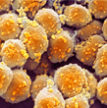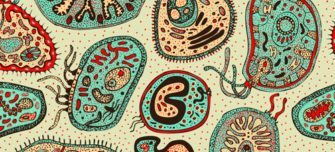The ever-growing tree of life

The 'third domain of life'
Every living thing on this planet belongs to one of three branches on the tree of life. Bacteria make up one branch, while animals, plants and fungi together make up another. Microbiologists have long suspected that the micro-organisms that have been studied in the laboratory are only a tiny fraction of natural microbial diversity.
The third domain of life was discovered in the 1970s. This mysterious group of organisms, the Archaea, remain one of the biggest puzzles in microbiology. Although superficially they look similar to bacteria, in evolutionary terms they couldn’t be more different.
Archaea have been discovered in some of the most hostile environments on the planet, in conditions that would kill other forms of life. Even more strangely, we have yet to find a single species of archaea that causes disease. Archaea have significant roles in aspects of global ecology, and we will explore how widespread and successful these organisms are.
-
What are Archaea?
Archaea can be spherical, rod, spiral, lobed, rectangular or irregular in shape. An unusual flat, square-shaped species that live in salty pools have also been discovered. Some exist as single cells, others form filaments or clusters. Until the 1970s this group of microbes was classified as bacteria.
Why does understanding archaea and the ever-growing tree of life matter to microbiology?
According to the ‘three-domains tree’, Eukarya and Archaea are more closely related to each other than they are to Bacteria. Hence, in this tree our closest cousins are the Archaea, a group of micro-organisms once thought to be restricted to anaerobic and other hostile habitats like hot springs and thermal vents in the deep ocean.
Archaea are remarkable objects of investigation due to their exquisitely distinctive biological properties and macromolecules. Archaeal organisms provide unique resources for investigations, to uncover the diversity and complexity of the immune system. More studies on archaea could answer many questions and improve our knowledge about eukaryotic evolution.
Read more about why understanding the ever-growing tree of life is important to our members and the wider microbiology community, access our additional resources, and continue to learn more about new frontiers in microbiology, as we explore synthetic biology.
-
Microbiologists working in this area
To celebrate our 75th anniversary in 2020, we invited microbiologists to nominate the discovery or event that best showcases why microbiology matters and helps us demonstrate the impact of microbiologists past, present and future. Learn more about the microbiologists who are studying the 'ever-growing tree of life'.
-
Resources and further reading
Explore more about the symbiosis that changed the world, how archaeal organisms provide unique resources for investigations and changing views on the tree of life.
-
Synthetic biology
Synthetic biology is a field that applies engineering principals, such as mathematical modelling or modularisation, to biological research. One of the technical advances that has significantly increased the ability to undertake synthetic biology, has been to artificially synthesise DNA, in order to create DNA parts.
Image credits:
iStock/rmbarricarte






